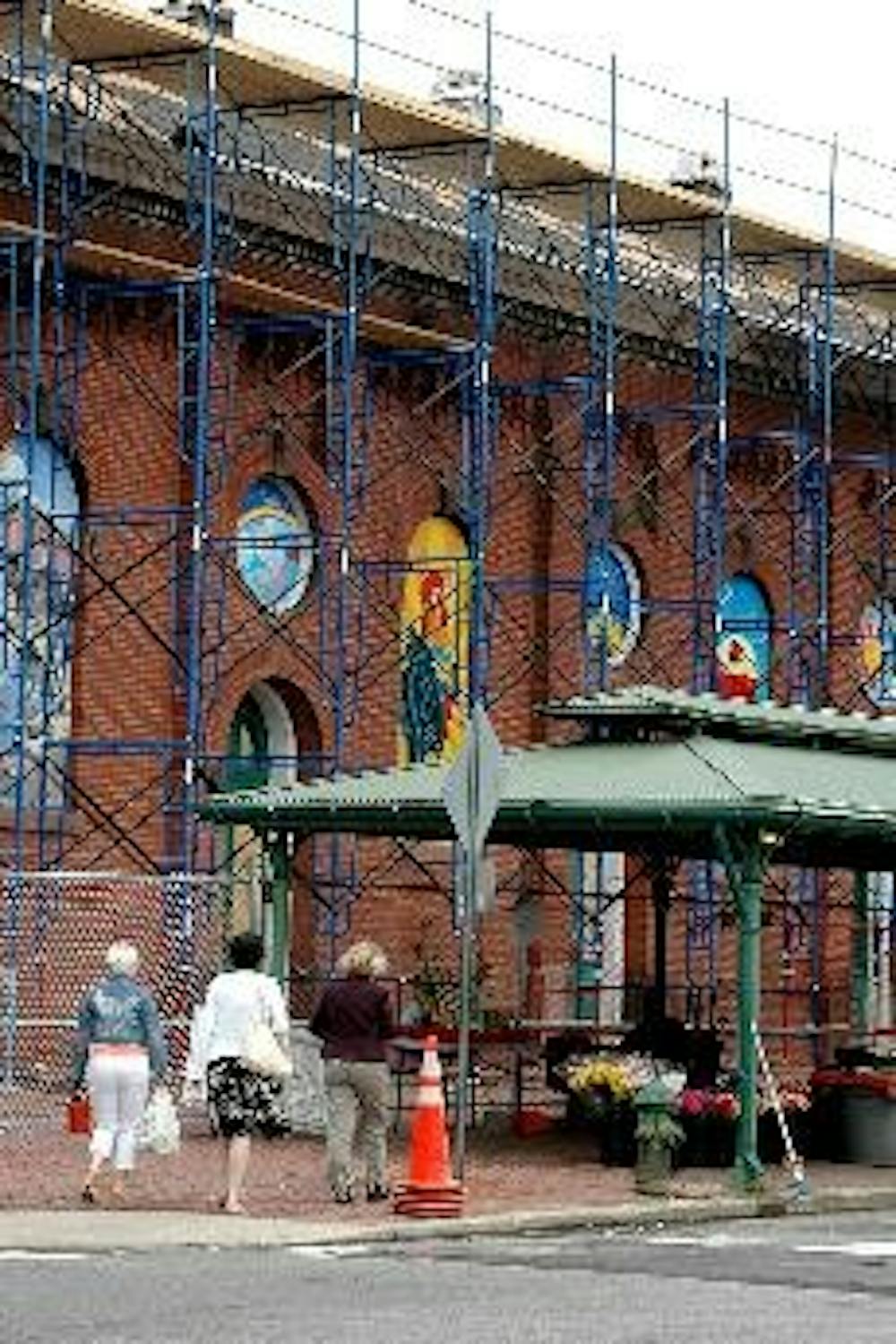A temporary structure to house the 14 vendors displaced by the April 30 fire that gutted Eastern Market's South Hall should be completed by late July, according to a May 18 press release from Mayor Adrian Fenty's office.
The structure will be a "tent-like" building measuring 50 feet by 230 feet and will have space for all 14 vendors whose businesses were destroyed in the fire, according to the press release.
Construction of the structure was slated for completion 30 days after groundbreaking, with equipment installation completed around July 17, according to the press release.
The mayor's office estimated costs for the physical structure at $490,000 with an additional $988,000 for construction costs and $1 million for new equipment for the vendors, according to the press release.
A more permanent structure should be completed 18 to 24 months, according to a May 1 press release from the mayor's office.
The construction of Eastern Market was completed in 1873. It was designed by D.C. native Adolf Cluss. According to the market's Web site, the market was built after the Civil War to end the District's reputation as "a sleepy southern village," as well as to provide an orderly supply of food to Capitol Hill residents. The market has operated continuously since its opening in 1873, surviving the arrival of chain grocery stores, attempted closure by the city government and changes in management.
Effect on Business
The fire has affected the business of all vendors at the market, not just those whose businesses were ruined in the fire.
Matthew Parker, who has sold photographs at the market since 2005, said he has seen a slowdown in business since the fire. He said most of his customers came to eat at the restaurants and delis that were housed in South Hall.
"Those people haven't been coming to the market," he said.
Even the most general patterns at the market have changed, according to Parker. He said there were typically more customers between 10 a.m. and 1 p.m., then a lull until around 3 p.m., when who he called the "hungover people" came to the market.
"People loved Eastern Market because it was sort of down and dirty," Parker said, referring to the lack of air conditioning and dirty facilities. "People were sort of drawn to that."
Nicky Cymrot, president of the non-profit Capitol Hill Community Foundation, said business at the market has been "way down," which affects not only market vendors but surrounding businesses as well.
Community Response
The Capitol Hill community has been "very responsive," Parker said. "It's Capitol Hill's thing. It's the charm of the area."
Much of the rebuilding effort has been run through the Capitol Hill Community Foundation, which has been raising money for various Capitol Hill causes since 1989. The foundation has set up a separate fund for Eastern Market vendors. All money raised by the foundation goes back to the vendors because all necessary overhead costs are donated, according to the foundation's Web site.
It was "convenient and fortuitous that they were sort of sitting there" and could almost immediately begin raising money for the market, said Jason Levine, who runs the blog www.saveeasternmarket.org with his wife, Shannon Culbertson.
Capitol Hill Community Foundation raised $265,000 as of June 1, according to the foundation's Web site.
"We are using [the money raised] to give just plain small financial assistance to merchants and their employees," Cymrot said.
The foundation is also using the money to help vendors set up outside by assisting in the purchase of items like refrigerated trucks, coolers and scales.
The foundation is trying to spread the word that "life [at Eastern Market] is active and bustling just like it's always been on the weekends," Cymrot said.
The group is placing ads in local newspapers and working with a graphic designer to create more ads to help spread the word, Cymrot said.
Others in the Capitol Hill area, as well as throughout D.C., are also trying to help. D.C. United donated $3 for every ticket sold to its May 26 game against the Houston Dynamo. Eleven restaurants participated in the Dining Out for Eastern Market event on May 21. Event organizers encouraged D.C. residents to eat at specified restaurants, which donated between 25 and 100 percent of their proceeds from the evening to the Capitol Hill Community Foundation.
Reaction to D.C. Government Response
Levine said the community has been very pleased with the response of the D.C. government, particularly as compared to the government's previous lack of response to needs for general renovations, including the installation of a sprinkler system, at the market.
"When you compare and contrast, this is astounding," he said.
Parker said the government's response to Eastern Market was particularly noticeable because other burned-out buildings, like the O Street Market, often sit vacant for years. The O Street market was closed during the 1968 riots, which were sparked by the assassination of Martin Luther King Jr., did not re-open until 1980, according to CulturalTourismDC.org.
David Lewin-Rowen, a junior in the College of Arts and Sciences who is staying in D.C. for the summer, said he is optimistic that the market will return to its previous glory.
"The Eastern Market fire was a tragedy, but since it has been open for well over a hundred years, I believe it will return to being a local shopping area as well as a tourist attraction," he said.





